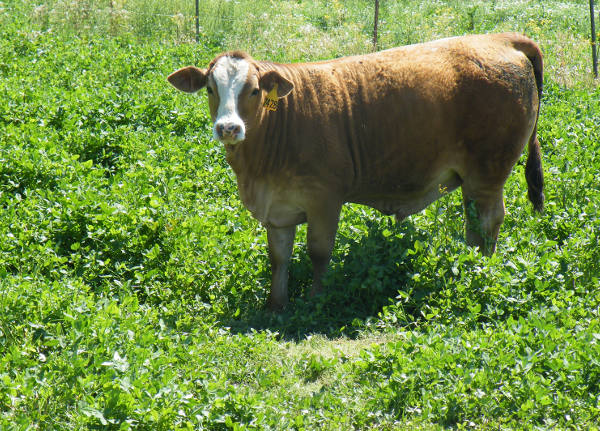
Only about 14 percent of the state was listed as being under “exceptional” drought conditions, according to the U.S. Drought Monitor of Feb. 21.In the Panhandle, farmers were not only having to contend with low soil-moisture levels, but also high winds and uncertain weather.The improved forage production meant many livestock producers could graze wheat or small grains, and reduce their dependence on expensive hay.
February 28, 2012

Rains continued to improve forages and the outlook for spring planting in many areas, according to Texas AgriLife Extension Service reports.
Only about 14 percent of the state was listed as being under “exceptional” drought conditions, according to the U.S. Drought Monitor of Feb. 21. However, though conditions have greatly improved in the last few months, nearly 70 percent of the state still suffered from “severe” drought conditions.
Exceptional drought is defined as widespread crop and pasture losses reported, and reservoirs and streams are low enough to create water emergencies. Severe drought is defined as when crop or pasture losses are likely, water shortages are common and some water-use restrictions have to be imposed.
Still, the improvement was welcomed, with many areas seeing a flush of forage growth thanks to warmer temperatures accompanying the rains. The improved forage meant many livestock producers could graze wheat or small grains, and reduce their dependence on expensive hay, according to AgriLife Extension reports from throughout the state.
“Driving to and from Abilene yesterday, the wheat crop looks as good as I’ve ever seen it; lush, uniform, dark-green, no bugs and about 8 inches high,” said Steve Byrns, AgriLife Extension communications specialist, San Angelo.
“(We had) 3 to 5 inches of rain across the county,” said David Winkler AgriLife Extension agent for Bosque County, southwest of Fort Worth. “Livestock producers seem to be cutting back on the amount of supplemental feed supplied to livestock. I think this is a result of the early spring green-up. One local producer said he just couldn’t afford to feed much more because of the cost. If that is the case, then the spring green-up could not have come at a better time.”
“After another good rain event last Saturday, and this week of warmer than usual temps, small grains and winter pastures continue to do very well,” said Rick Maxwell, AgriLife Extension agent for Collin County, northeast of Dallas. “The mild winter thus far has helped with good winter pastures and less feeding of hay and supplements.”
Not all county agent reports were so rosy. In the Panhandle, farmers were not only having to contend with low soil-moisture levels, but also high winds and uncertain weather.
“Deaf Smith County producers are preparing for spring and trying to fight the never-ending wind events,” said Rick Auckerman, AgriLife Extension agent for Deaf Smith County, west of Amarillo. “The wind speeds have been averaging 30 miles per hour to upwards of 60 miles per hour on a daily basis this week. Producers are trying to reduce the soil erosion in any way possible with tillage equipment. Different cropping scenarios are being discussed to try and outguess Mother Nature this spring: half corn, half cotton; all cotton; and half grain sorghum, half cotton.”
More information on the current Texas drought and wildfire alerts can be found on the AgriLife Extension Agricultural Drought Task Force website at http://agrilife.tamu.edu/drought/.
You May Also Like



